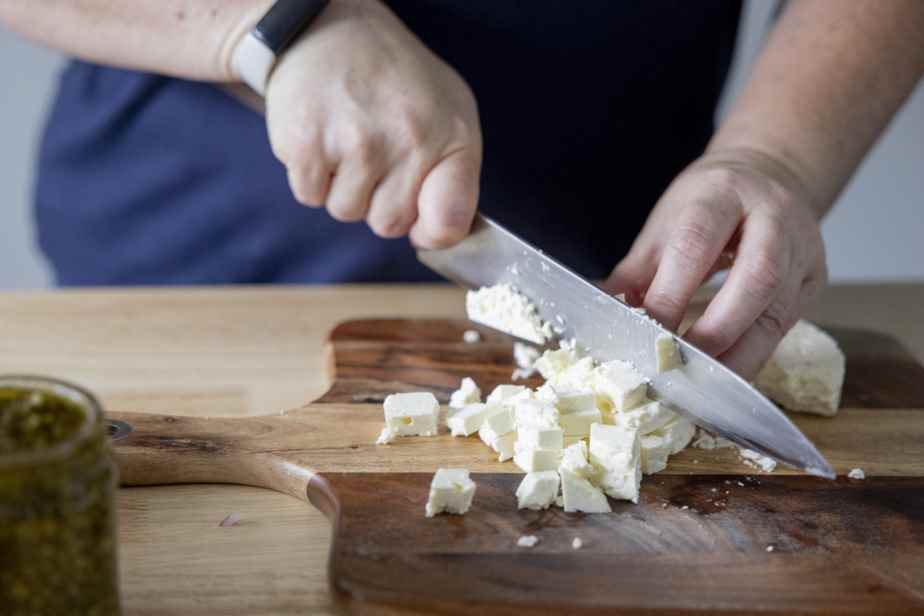Posted at 4:00 p.m.
Develop reflexes
“The key is to put yourself in lunch mode when preparing dinner,” says host and nutritionist Geneviève O’Gleman. “That’s my vision of lunches: we develop a working method to always have the basics; we are not starting from zero. That way, we don’t get discouraged in October and we keep the flame alive. And if we develop this reflex to prepare a little more, we will always have bases for quick lunches. “Are we eating salmon? We put it aside for a spread, illustrates Geneviève O’Gleman. Same thing for pasta, rice, meat… And since the cooking time is the same, we cook hard-boiled eggs in pasta water — always useful in a sandwich or in a salad, in addition to keeping for the whole week in the fridge.
get ahead

PHOTO MARCO CAMPANOZZI, THE PRESS
Fruit washed in advance: a good idea to save time.
Anything you can do ahead of time will automatically save precious minutes during the week. Geneviève O’Gleman likes to prepare two or three vinaigrettes during the weekend; they will keep their freshness for up to five days in a glass container in the refrigerator. Thus, we save not only time during the week – it will be enough to mix and pour – but also money by avoiding going to commercial dressings, she underlines. The author of the Cinq Fourchettes blog, Nancy Bordeleau, also takes advantage of weekends to wash fruit (grapes, strawberries, blueberries, etc.) that she keeps in the fridge in glass containers, rather than plastic, for more freshness; all that remains is to transfer them when preparing lunch boxes. Carrots also hold up well in a jar filled with water.
Stock up on “lifesaving” foods
For those evenings when we can’t count on leftovers, Nancy Bordeleau makes sure to always have a few “savior” foods: canned tuna in the cupboard for sandwiches and salads, hard-boiled eggs in the fridge, chicken already cooked and cut into strips in the freezer, as well as frozen hummus in small portions. She also makes sure to prepare muffins and cookies before school starts and freezes them in packs of six; the next week she makes a different variety and freezes some of it, while pulling out muffins from the previous batch, and so on. “That way, you don’t eat the same muffin all week and you always keep a quantity in the freezer,” she says.
Plan extras

PHOTO MARCO CAMPANOZZI, THE PRESS
“No child is going to be traumatized by eating the same thing two or three times in the same week,” says Nancy Bordeleau, author of the blog Cinq Fourchettes.
When she cooks lasagna, shepherd’s pie, chili, spaghetti sauce or any other dinner meal that freezes well, Nancy Bordeleau takes care to prepare individual servings that go straight to the freezer — “for panicked mornings.” And if she only has one piece of advice to give, the mother of three insists on this point: “No child is going to be traumatized by eating the same thing two or three times in the same week”, she says. .
Maintain your accessories

PHOTO ALAIN ROBERGE, THE PRESS
Reusable utensils and containers have become lunchbox staples.
Reusable utensils and containers have become staples of lunch boxes, and they will inevitably need to be cleaned on a daily basis to ensure a long life. We wash the fabric snack and sandwich bags directly in the dishwater, let them dry on the dish rack or a bottle dryer and leave with the next day, says Sonia Lizotte, of L’Escouade Culinaire. Reusable silicone bags are dishwasher safe.
Involve the children

PHOTO EDOUARD PLANTE-FRÉCHETTE, LA PRESSE ARCHIVES
Children can participate in the preparation of lunches.
“Lunches are a great starting point for learning to cook,” says Geneviève O’Gleman, since they are often cold recipes that don’t require cooking, but rather assembly. The next step in preparing lunches is therefore to involve the child by first giving him choices — selection of fruit or snack, sandwich or salad? “It gives him control and he’s not going to sulk about what he’s chosen. We then prepare the lunch “as a team”. When children are small, they are given fun little tasks: put handfuls of cranberries or spinach in the salad, choose the snack, fill the water bottle, cover the dishes… They will be proud to say that they have even prepared their lunch!

